by Jenny Rose | Dec 14, 2017 | Authenticity, Emotional Intelligence, Needs
It occurred to me this morning that, in general, I’m still confused about what I want.
I’ve had a tumultuous history with my own wants. At some point, very early, as I was learning to be a people pleaser, I gave up wanting anything because I thought it was bad. What I understood was that everyone else’s wants were far more important, and it was my more-than-full-time job to provide those wants rather than selfishly have my own. With rare exceptions, that’s been my modus operandi my whole life.
When I went through a life coaching and emotional intelligence program, my coach suggested I had a perfect right to get my needs met, and he defined some of my “wants” as needs, for example my longing for community and connection. I was enraged. Nobody had ever before made such an outrageous proposal. He clearly didn’t understand the terrible vulnerability of needing or wanting anything from anyone. Having the right to get needs and wants met was the most ludicrous, dangerous piece of heresy I’d ever heard.
That was four years ago, and I’m as angry about it now as I was the first time I heard it.
I also can’t leave the idea alone. I think about it all the time.
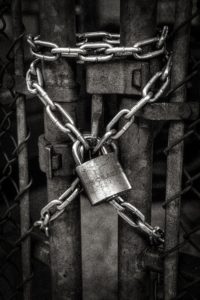
Photo by John Salvino on Unsplash
I picture my needs and wants as a snarling chained wolf with blazing eyes, nothing but matted grey hair over bones, backed into a tight corner, determined to go down fighting.
I grieve, literally, to admit I chained it there myself. I chained it without food, water or shelter, and walked away — for decades. During those years of neglect, it starved and thirsted. It suffered alone with no help, no hope, a solitary prisoner.
I’ve done a lot of animal rescue work in my time, and I know sometimes an animal is just too far gone to rehabilitate. Sometimes you can save their bodies, but the abuse and neglect they’ve suffered has damaged their will to live and their ability to trust and connect, and rescue comes too late. Sometimes, against all odds, some strength of heart or spirit survives and an animal accepts affection and care, but its body is too starved or broken to heal.
Part of what I’ve been doing since I’ve come to Maine is to try to rescue my chained wolf, this piece of self I rejected, denied and tried to destroy.
It’s a long process, filled with grief, shame and anger. It takes determination, patience, and the willingness to own my history, my pain and my choices, as well as consenting to my responsibility for my own self-healing. Overcoming internal taboos is desperately hard work, and Wanting is one of my oldest taboos.
Sometime last year I wrote a list titled “Things to Want.” It was short and consisted of necessities, mostly. After a lot of hesitation, I added two things that were not necessary but I just … wanted. It felt wrong. It felt shameful. I left the list on my desk and over the following days and weeks I looked at it as I went about my life. About eight months later I bought one of the unnecessary things, a perfumed body oil I love. It cost about $25.
It was like offering a little bit of bland food to my starving wolf, pushing it near with a stick so as to avoid getting mauled. Not so much food as to make it sick, but a place to start.
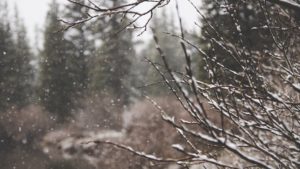
Photo by Arun Kuchibhotla on Unsplash
This morning, in the pause of winter and our first big snowstorm, my partner and I talked about our plans, our dreams, and our progress. Later, I went out to walk in the snow and I suddenly saw another layer to wanting, another step closer to making amends to my chained wolf.
Wanting is just the beginning. Making a Christmas list is only the top step. What’s the list under the Christmas list, and the list under that? What is it I really want, independent of anyone else? What about the dreams I hold in common with no one, that are just about and for me? If I was free — If my wolf could bound through the snowy landscape and disappear into the Yule forest — what would I want? If we could escape judgement, our own and others’; escape for a moment our stories and labels and self-definitions; escape family, social and tribal expectations; escape our ideology (most imprisoning of all) and want, honestly, nakedly, with all our hearts, what would that Christmas list look like?
In other words, it’s not about the perfumed body oil (Aphrodisian Fire, by the way, from Kate’s Magik). It’s about touch, scent and caring for my thinning skin. It’s about deliberately honoring my own feminine sensuality.
I don’t need any particular product, cosmetic, clothing, gizmo or piece of technology in order to honor my own feminine sensuality, although there are plenty of things to buy that might support that want, including Aphrodisian Fire, but I see now those are really just symbols. I have the power to honor my sensuality in the way I live — in the choices I make about who I connect with and how, and how I treat myself.

Photo by Caley Dimmock on Unsplash
Santa hasn’t got my choices in his sleigh.
I’m very attached to the dreams my partner and I hold in common. I love our vision, and I’m invested in it. It’s going to take a lot of money, and we don’t have that right now.
Maybe we won’t ever have it.
Maybe I was a damn fool (again) and I should never, never, have listened to someone who says it’s okay to have needs and want them met. Maybe I should walk away from my wolf again, and this time never come back. Let it starve to death.
But maybe our grand vision and plans are only the top layers of what I really want. Maybe the plan is the wrapping paper around the real treasures of self-reliance; living as part of a complex, self-sustaining system; building independence from the energy grid and a culture I largely can’t support; fostering community and trusting in my greatest joy … writing.
I don’t have to wait for the plan to happen to have those things. I don’t need money. I don’t need to wait for someone else. I don’t need to brutally imprison or eliminate my wants and needs. I can be learning, building and transforming my life right now, today, from the inside out. I can, day by day, draw a step closer to my wolf with food, with water, with a gentle hand and with compassion, and maybe, one day, come close enough to remove the chain and let the poor creature go free and wild into the world, wanting and needing as it will.
So, I’m making a list and checking it twice. Or three times. I’m peering underneath the items, things, objects, stuff on that list. What is it I really want? What am I really longing for? And if I look under that, what do I find? What are the deepest wants and needs?
Merry Christmas, everyone.

Photo by Galina N on Unsplash
All content on this site ©2017
Jennifer Rose
except where otherwise noted
by Jenny Rose | Aug 24, 2017 | A Flourishing Woman, Self-Love
My partner has trained in Aikido, and he relates hearing the above advice years ago from his teacher. Ever since he repeated it to me, I’ve been turning it over in my mind.
We lately found a Tai Chi teacher and joined a class. I’ve wanted to do Tai Chi for a long time, and it’s every bit as much fun as I always imagined it would be. I practice every day, and part of my practice is meditating on that wonderful piece of subtle Eastern wisdom: Don’t be where the blow lands.

Photo by Jason Blackeye on Unsplash
Tai Chi is a Chinese martial art focusing on energy manipulation, practiced for defense and health. Many of the people in the class we joined are there to address balance and strength. I’m happy to support both my balance and my strength, but I’m learning Tai Chi primarily as a grounding and centering tool.
We’re learning a series of specific slow, repetitive movements that flow into one another. Each movement is called a form, and each form has its own, often poetic name: The bow, the crane, windmills, the lute. Tai Chi emphasizes locating and moving from one’s center, and it’s interesting how difficult I find that.
Learning the forms and stringing them together is no problem for me. It takes a lot of repetition to get arms and legs coordinated and figure out proper positioning, but I like repetition and want to practice. What I notice, though, is how easily I lose my center. I reach or step too far. I find myself up on one toe or another when I’m not supposed to be. I put one foot directly in front of another, like a model on a catwalk, instead of maintaining a more stable, wider-based stance. My ankles are weak and unsteady. If I’m doing one form at a time in isolation, I can tighten my core and be solid, but Tai Chi is flowing movement, albeit slow, and after a few different forms my center is gone.
Losing my balance in this way is a perfect metaphor for the way I’ve lived my life until recently. My energy and attention were always directed outward. I had very little ability to support myself; I relied on external support and I didn’t distinguish toxic inputs from healthy ones. I was too hungry and had too many unmet needs; I took a lot of poisoned bait. Not only did I stand where blows landed and bullets sped, I made a camp there and called it home. I believed I needed those blows and bullets, that they meant love, that it was my responsibility to endure them, and that I deserved them.
We can’t avoid life. Harsh words, verbal attacks, physical violence and unexpected events like fire, flood, riots and sudden public violence are going to happen. Even so, there are ways in which to meet life’s blows with all the grace and elegance of Tai Chi, and as I practice the forms and movements, I think about the skills that allow me to absorb the blow, to flow with it, and to step away from where it landed before it can be repeated.
I’m a big proponent of self-defense and I always carry a knife. I’m not afraid to fight. One day soon I’m going to learn to shoot and buy myself a gun, which I will carry. That kind of self-defense is a separate thing from my practice of Tai Chi. Tai Chi is not about any kind of an aggressor lurking in an alley or a parking lot; it’s about emotional and energetic safety.
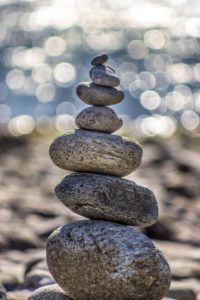
Photo by Deniz Altindas on Unsplash
Tai Chi, along with swimming, dancing, ritual work, walking and writing, is a way to call myself home, back to the center, back to my bones and the source of myself. Maintaining my center absolutely requires my undivided presence. I can’t center properly if I refuse to know all of who I am. I can’t maintain balance if I refuse to love all of who I am. The minute I try to amputate bits and pieces of myself, deny my thoughts and feelings or start tearing myself down in any way, I’m standing (again) where blows are guaranteed to land. When I catch myself justifying; pleading; waiting for external validation; trying to please; choice-making out of fear, denial and self-doubt, I know I’m standing on the shooting range with a target pasted over my heart and head.
I’ve spent too much of my life staggering under loads of other people’s shit, carrying vampires and dragging chains. Confusion, fear, perfectionism, disempowerment and constipated unacknowledged feelings have all kept me standing where the blows land. Arguing with what is has cemented me in the path of bullets. Clarity, self-confidence, making friends with my feelings and reclaiming my power allow me to deflect, block or better absorb the blows that come my way.
I’m intentional about living with the wisdom of choosing not to be where the blow lands. Reclaiming my center and moving mindfully from danger, not only physically but creatively and emotionally, all but eliminates my fear and anxiety. Concentrating on grounding leaves no room for anything but strength and rootedness. The meaning of my life is not out there, in the noise and chaos of what others think, say and do. The meaning of my life is in here, centered within the container of my body, expressed by what I think, say and do.
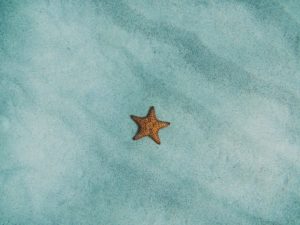
Photo by Amy Humphries on Unsplash
Now, if you’ll excuse me, I have to go see if I can remember the windmills and the lute from yesterday’s class.
All content on this site ©2017
Jennifer Rose
except where otherwise noted
by Jenny Rose | Jul 27, 2017 | Connection & Community, Emotional Intelligence, Holistic Management
My partner and I have hired a permaculture group called the Resilience Hub out of Portland, Maine, to collaborate with us in the development of a 30-year plan for our 26 acres.
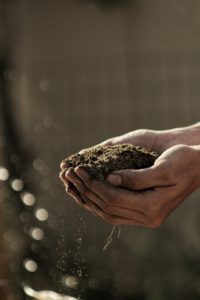
Photo by Gabriel Jimenez on Unsplash
Permaculture, for those of you who didn’t follow the above link, is “the development of agricultural ecosystems intended to be sustainable and self-sufficient.” In other words, it’s a holistic management plan that includes plants, animals (insects, birds and reptiles), people, water and land. The land we live on consists of wetland, a river, a pond, a year-round daylight spring, streams, fields and woodland.
That’s what we tell people, anyway. I’m beginning to understand what permaculture really means to me, though, is a commitment to love.
I’m interested to discover I’ve achieved the ripe old age of 53 and discarded nearly my entire definition of love after two marriages, two long-term non-marriage relationships and raising two children. At this point I know a lot more about what love isn’t than what it is.
Here’s my current working definition: A relationship revolving around what we want others to be is not love. A relationship revolving around the question “Who are you?” is love. Notice sex is not part of the definition. I’m talking about love in the wide sense here, the act of loving another human being, independent of legal or blood ties. For me, this is also the root of self-love. Do we endlessly tell ourselves what we should, must, and have a responsibility to be, or do we allow ourselves to discover who we in fact are?
Creating a permaculture plan for this piece of land is a deliberate and intentional journey into what the land and the life it sustains is, as well as what we are as individuals and as partners. From our most private thoughts and beliefs to the boundary of the 26 acres we live on, we become note takers and observers. We practice surrender and acceptance. We listen and watch with curiosity and attention. We are present every day with ourselves, one another, and the land. We don’t think about imposing our will. We think about collaboration and cooperation, weaknesses and strengths, effectiveness and healing.
The consent to see and be seen is a profound and intimate expression of love rippling from the inside outward. We are not intruders here. We inhabit this land and want to protect and preserve it. The porcupine living in the barn cellar, the owls down by the river, the phoebes nesting in the barn, the passing bear who wiped out our suet feeder, are not intruders, either. The poison ivy, stinging nettle, ticks and mosquitos live here. The snapping turtles in the river and the leeches in the pond call this place home, just as we do. Permaculture is a peace treaty, the practice of appreciation for the variety and complexity of life around us, and the humility to admit much of its elegant mystery is beyond our knowledge or understanding.
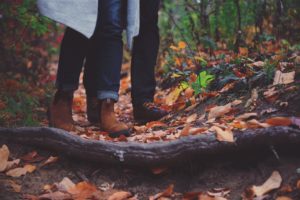
Photo by Takahiro Sakamoto on Unsplash
As I walk these acres, alone, with my partner or in a group with the Resilience Hub, I’m learning the land as I would learn a beloved’s body. I’m noticing the animal trails wandering from field to forest to river, lines and wrinkles of use tracing their way along the land’s contours and folds, suggesting where we, too, might make a path, a place to pause, a spiritual resting place.
I map old stone walls like the delicate sculpture of a spine, huge mossy boulders and landmark trees, learning the texture and landscape of this place. I wander in the thin-skinned places where old bones of ancient glacial esker are revealed. I think about bird nesting boxes, bee and pollinator boxes and honeybee hives.
Over the years, my partner has discovered all the delicate veins of water, daylight and underground, seasonal and year round, the lifeblood of the land. Thick forest hides damp, humid hollows and shallow bowls where mosquitoes fill the leaf-dappled air and the turkey and grouse hide. The grassy hair on the open slopes and fields is twined, in this season, with black-eyed Susan, purple vetch, queen Anne’s lace, wild pinks, blooming milkweed, and red clover.
The land shows us where wildflowers thrive, and which type decorate which season. It demonstrates where water runs, so we know exactly where to position a well. The trees inform us of water availability, drought, crowding, disease and age. The raptors flying over us, hunting, help us know where raptor roosts would be welcome in order to protect the woody agriculture we think of introducing against rodent damage.
As we wander this terrain, we look for nothing and try to see everything. This is how the sun falls during each month of the year. This is where the field floods when the river ice dams thaw in the spring. This is where the doe that was hit on the road lay down and died. This is the special spot where I come, early in the morning, to sit by the river and be alive. This is where the wind strokes the exposed slope, and this is where the trees shelter a small clearing that catches the sun. This is the place where a bittern pounced like a cat on some small rodent by the pond one morning. Here the snow drifts, and here it lies late in the season as the bluets bloom in the boggy field. Here was the old fox den.
Trees topple, decay into humus where fungus thrives and new trees reach for the sun. The land stretches, sheds, sloughs away and reconfigures. Species populations rise and fall. We aspire to that resilience and sustainability. We aspire to the harmony and complexity innate in the landscape around us. We don’t want more than we need to eat, to live, to love. We don’t want to be well-groomed, civilized, obedient and sterilized. We want to root the rest of our lives in the color and scent and texture of the primordial wisdom of life and death as naturally and unapologetically as the raven, the fern or the tree.
Who am I? Who is my partner? What is this land? I believe these are questions that open the way to true love; to sustainability; to reciprocity, respect and surrender. As long as we ask and cherish these questions and receive and cherish the answers, hour by hour, day by day, season by season, cycle by cycle, love endures.
All content on this site ©2017
Jennifer Rose
except where otherwise noted








